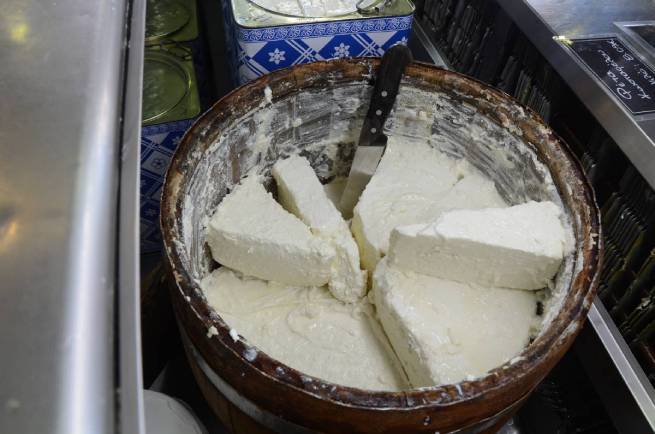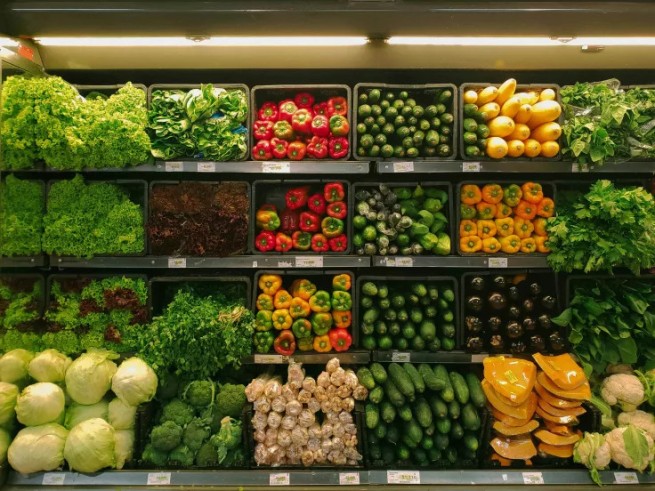Feta is a purely Greek product that has received an international protected brand. The vast majority of Greeks love feta. But do you know what its nutritional value is, what are the benefits, and who should limit their consumption?
Feta is rich in nutrients. Just 28 grams of feta contains:
- Calories: 74
- Fat: 6 grams
- Protein: 4 grams
- Carbs: 1.1 grams
- Riboflavin: 14% of the Recommended Daily Allowance (RDA)
- Calcium: 14% of RDI
- Sodium: 13% of RDI
- Phosphorus: 9% DRI
- Vitamin B12: 8% of RDI
- Selenium: 6% of RDI
- Vitamin B6: 6% of RDI
- Zinc: 5% of the recommended daily allowance.
The product contains a significant amount of vitamins A and K, folic acid, pantothenic acid, iron and magnesium. At the same time, feta contains less fat and calories than aged cheesessuch as casseri, cheddar and parmesan. 28 grams of cheddar or parmesan contains over 110 calories and 7 grams of fat. Besides Feta contains more B vitamins and calcium than other fresh cheeses such as mozzarella, ricotta, cottage cheese and goat cheese.
1. Feta is good for bones
Feta is a good source of calcium, phosphorus and protein, which have been shown to improve bone health. Calcium and protein help maintain bone density and prevent osteoporosis, while phosphorus helps bones absorb calcium. In addition, sheep and goat milk contains more calcium and phosphorus than cow’s milk. That’s why, By including cheeses like feta in your diet, it will be easier for you to reach your recommended daily allowance for calcium.
2. Feta is good for the digestive system
Probiotics are live, friendly bacteria that provide health benefits. Feta has been proven to contain the probiotic Lactobacillus plantarum, which accounts for about 48% of all bacteria.
These microorganisms can help improve the immune system and gut health by protecting the digestive tract from disease-causing bacteria such as E. coli and salmonella.
Besides probiotics increase the production of chemical compounds, suppress the body’s inflammatory response.
3. Feta has “good” fats
This product contains Conjugated Linoleic Acid (CLA), a fatty acid found in animal products. It has been proven to improve body composition by reducing body fat. CLA may also help prevent diabetes and has demonstrated anti-cancer effects.
Sheep’s milk cheeses have a higher concentration of CLA than cow’s or goat’s milk cheeses. Feta contains up to 1.9% CLA, which corresponds to 0.8% fat content. A study has shown that the use of bacterial cultures in cheese production (as is done in feta) helps to increase the concentration of CLA.
It is worth noting that Greece has the lowest incidence of breast cancer and the highest consumption of feta cheese in the European Union.
4. Possible problems from eating feta
Feta is a good source of nutrients from dairy products. However, due to the method of production and the types of milk used, it may have some disadvantages. Feta is high in sodium (salt).
In the process of making feta cheese, salt is added to the curd. In addition, during storage, the cheese must be immersed in brine with a salt content of up to 7%.
The end product is cheese, which has enough sodium. In particular A slice of feta contains 312 mg of sodium per 28-gram serving, which is equal to 13% of the recommended daily allowance for sodium.. It’s a good idea to reduce the salt content of the feta by rinsing it with water before putting it on a plate.
5. Feta is high in lactose.
Fresh cheeses (and products high in milk fat) tend to be higher in lactose than aged cheeses. Because feta is fresh cheese made with whole milk, it has more lactose than other cheeses such as gouda and parmesan.
Those who have allergic or lactose intolerant, should avoid eating fresh cheeses, including feta.

Pregnant women should not eat unpasteurized feta cheese.. Listeria monocytogenes (Listeria) is a type of bacteria found naturally in water and soil that can infect crops and livestock.
Pregnant women are generally advised to avoid eating raw vegetables and meats, as well as unpasteurized dairy products, as they can be contaminated with these bacteria.
Cheeses made from unpasteurized milk have a higher risk of carrying bacteria than cheeses made from pasteurized milk. Similarly, fresh cheeses have a higher corresponding risk than aged ones due to their higher moisture content.







More Stories
Vaccine to combat antibiotic resistance
Oral health: increased risk of cancer
Avian influenza virus found in cow's milk